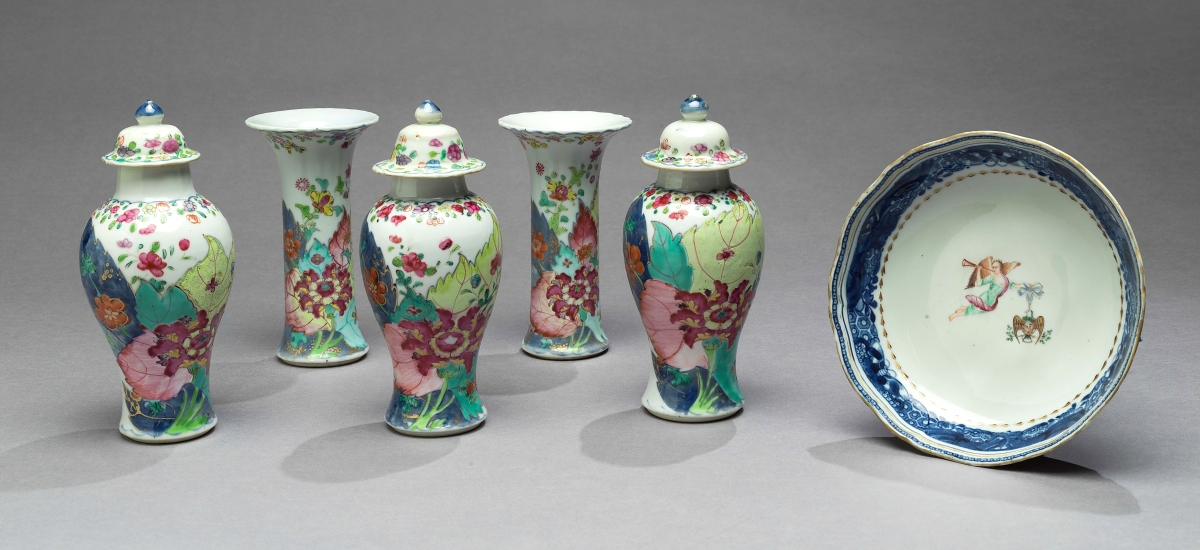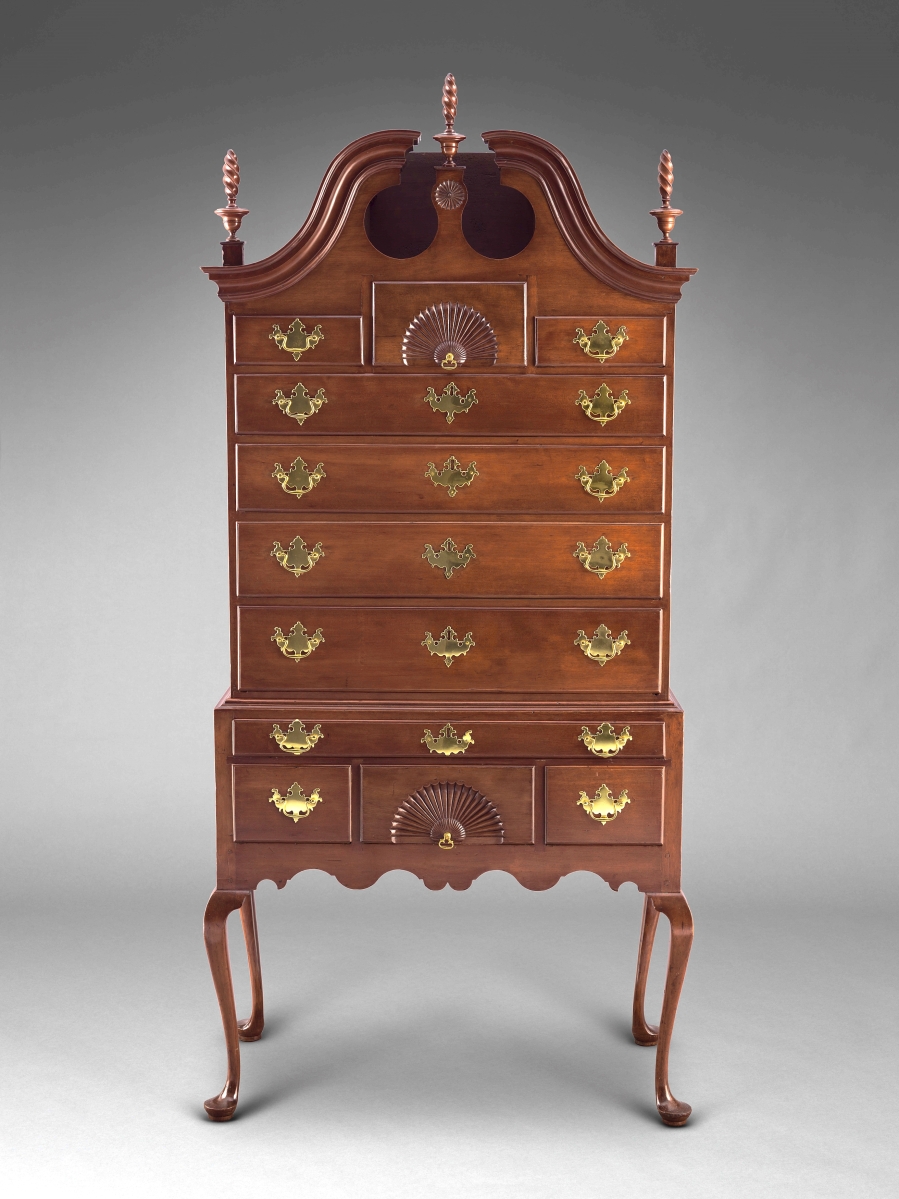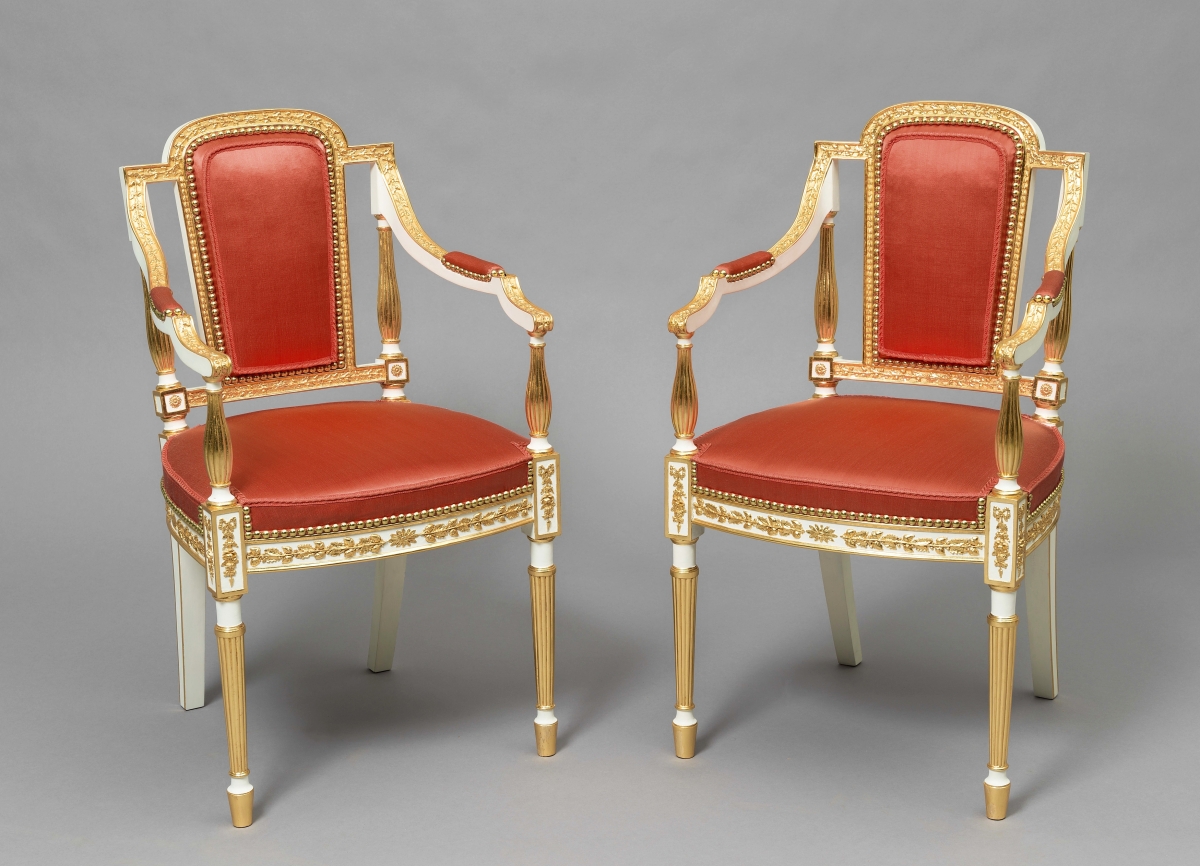
Five-piece garniture, Jingdezhen, China, circa 1785, hard-paste porcelain; together with a small dish, Jingdezhen, China, circa 1785, hard-paste porcelain, bearing the insignia of the Society of the Cincinnati.
Photos courtesy of the Art Museums of Colonial Williamsburg
WILLIAMSBURG, VA. – Earlier this year, the Colonial Williamsburg Foundation announced the most significant single American decorative arts bequest in its 90-year history: The Joseph H. and June S. Hennage Collection with its more than 400 objects of various media, including American furniture and miniature furniture, American silver and Chinese porcelain that will transform Colonial Williamsburg’s already renowned collections. To celebrate this momentous bequest, an exhibition of approximately 50 highlighted objects, “A Gift to the Nation: The Joseph and June Hennage Collection,” opened at the DeWitt Wallace Decorative Arts Museum on June 26 and will remain on view through 2023. While only a fraction of the overall collection, the items selected for the exhibition illustrate the Hennages’ taste and collecting style, the American origins and family histories of the objects and the couple’s passion for American decorative arts.
“Joe and June Hennage were remarkably generous and philanthropic,” said Ronald L. Hurst, the foundation’s Carlisle Humelsine chief curator and vice president for museums, preservation and historic resources. “They wanted to ensure that these exceptional illustrations of the nation’s history and culture would be held in the public trust for everyone’s edification. Their gift to Colonial Williamsburg has done just that and we are forever in their debt.”
“Collectors have many reasons for acquiring the objects they amass, but for the Hennages, who started collecting American decorative arts in the mid-1960s, the first step towards any antique purchase was “buying with your heart,” as June Hennage described it. The next step was studying the object for its authenticity, history and condition to determine if it was right for their collection. This method of consideration led to an assemblage of superlative examples of furniture and silver from important colonial centers, including Boston, Philadelphia, New York, Baltimore, Charleston and the Connecticut River Valley. The Hennages only acquired pieces on which they both agreed, and often the items were gifts to one another. Objects were selected both to fit within their home as well as to highlight various forms, such as tables, high chests, chairs, tea sets and sauceboats, which represent the regional diversity in American furniture and silver. These pieces were complemented with an array of other materials, primarily Chinese export porcelain.

High chest of drawers, possibly by Isaac Tryon, Middletown or Glastonbury, Conn., 1760-90, cherry, white pine and tulip poplar.
Colonial Williamsburg and its annual Antiques Forum played an important role in the Hennages’ collecting focus and philanthropy for more than 50 years; they received the highest honor for service to the foundation, the Churchill Bell award, in 1994. The couple’s patriotic generosity also extended to other institutions to whom they donated important American objects, including the US State Department, the White House, the National Portrait Gallery, Mount Vernon and Monticello.
Objects from the Hennage collection that were selected for this exhibition illustrate June and Joe’s collecting philosophy,” said Tara Chicirda, curator of furniture at the Colonial Williamsburg Foundation. “They specifically acquired representational objects from a variety of regions to highlight the local options in form or ornament, and they often sought out pieces with family histories or by well-known makers with signatures or labels. We have tried to show the breadth and depth of the furniture and silver collections in this exhibition as well as highlight their interest in miniature furniture and Chinese export porcelain.”
Joe and June Hennage’s interests in American silver focused primarily on the period between 1730 and 1815 with emphasis in objects from Boston, Philadelphia and Baltimore. Their collection of approximately 100 pieces includes tea and coffee sets, jugs, tankards, cans, goblets, porringers, sauceboats, casters, salvers, punch strainers and ladles, many with known histories of ownership. As with the furniture and ceramics in the bequest of this collection, the silver from the Hennage collection is transforming the already important assemblage of silver in Colonial Williamsburg’s holdings.
“The Hennage silver bequest is game-changing, effectively doubling the number of American-made hollowware pieces owned by Colonial Williamsburg. It offers exciting new opportunities to interpret the diverse range of wares produced by silversmiths from New England to the South and includes important examples with distinguished pedigrees,” said Janine E. Skerry, Colonial Williamsburg’s senior curator of metals.
The Chinese export porcelain that Joe and June collected to complement their antique furniture and silver reflected their passion for American history and sense of design. The pieces to be on view in the exhibition include objects with rare American histories of ownership and those that reflect the couple’s love of vibrant color.
“The Chinese porcelain featured in the exhibition not only relays stories of the young United States, but also tells very personal stories of Joe’s and June’s love of collecting and their love of brilliant colors,” said Angelika R. Kuettner, associate curator of ceramics and glass at Colonial Williamsburg. “While the ceramics in this multimedia exhibit are only highlights from the collection, it’s important to note that, to date, the bequest marks the most significant addition to Colonial Williamsburg’s collection of Chinese porcelain destined for the post-Revolutionary American market.”
The DeWitt Wallace Decorative Arts Museum and the Abby Aldrich Rockefeller Folk Art Museum are both housed in their newly expanded building at 301 South Nassau Street. For more information, www.colonialwilliamsburg.org, 855-296-6627 or by following Colonial Williamsburg on Facebook and @colonialwmsburg on Twitter and Instagram.














